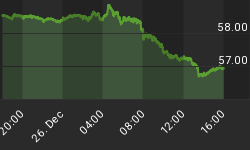As expected, the passage of the long holiday weekend served to sober up financial markets after the exuberant finish to last week. In the sobering-up process, they were helped by a Wall Street Journal article entitled "Europe's Bank Stress Tests Minimized Debt Risk." This article read, in part,
"An examination of the banks' disclosures indicates that some banks didn't provide as comprehensive a picture of their government-debt holdings as regulators claimed. Some banks excluded certain bonds, and many reduced the sums to account for "short" positions they held—facts that neither regulators nor most banks disclosed when the test results were published in late July."
Whoooops!
The banks claimed that they only did what they were told to do. That is, it was the test that was rigged and not the banks being dishonest.
Recall that only 7 banks flunked those tests, a result that many of us found improbable (albeit predictable, since no half-awake regulator would ask a question publicly that it didn't already know the answer to). It was fairly likely that the books were cooked, and I said so at the time (see my column on the topic).
So equities reversed almost all of the Friday gains, and the bond curve rallied and flattened. Credit default swaps for European banks widened sharply. The VIX rebounded, but volumes remained excruciatingly light. Volumes will build over the next couple of weeks, as summer vacations end and all of the kids get off to school. If volumes do not build, then that in itself is a bad sign.
.
So often, Monday (and in this case Tuesday of a long weekend) produces little news. I am thankful at times like these for the occasional article in the popular press that makes the job of writing so much easier. This weekend, the cover story on Barron's did the trick. The cover promised to tell "What's Ahead For Stocks," but the clincher for me was the subtitle, "Wall Street's top equity strategists are wary, but their consensus view is that the market will rise 7% by year end."
Wow, they are really wary, aren't they? I prefer this alternative subtitle: "Wall Street's top equity strategists see stocks bounding ahead at a rate three or four times faster than the long-run historical after-inflation rate of return." If the market is 7% higher in four months, that implies a 21% annual rate of increase. That doesn't sound wary to me. And that's 20% over inflation, while in the long run we cannot expect more than about 4.5% over inflation (see Cornell and Arnott, "The Basic Speed Law for Capital Markets") without multiple expansion. Oh, wait...that 4.5% includes dividends, and the Wall Street strategists were talking about index values, so these wary strategists are expecting a 20% pace of growth in the index after inflation when the normal pace is something like 2-2.5%. So these conservative fellows are looking at something like ten times the average annual pace of index advance.
It gets worse. The bearish strategists basically saw no advance (no one saw any significant decline) while the bullish strategists saw an 18% rally in the four remaining months. That's 53% annualized after inflation, so around 20-25 times the long-term average.
Now, if the market had positive momentum and/or was undervalued, then perhaps it would not be such a crazy forecast. After all, if you have concluded we're going to have the "up" part of the distribution, then 7% for four months might be defensible. Let's look at these.
The first chart below shows the seventeen-week rate of change of the S&P 500. That's roughly one third of a year. Is there momentum here? Actually, as of Friday the market was about ½% lower than it was 17 weeks earlier. That isn't what I would call strong positive momentum, nor even an oversold situation. That sounds pretty neutral to me.

I don't see much equity momentum, do you?
But perhaps stocks are cheap and just looking to launch higher? Here, too, the argument is difficult to make. Equities are simply not valued at bear-market-bargain lows. The chart below, from the website of Smithers & Co shows the Q ratio (which measures the price of the equity market relative to its replacement value) and the cyclically-adjusted price/earnings ratio popularized by Robert Shiller. Both suggest that the market is quite substantially overvalued. Although the chart is from Q1 data and June prices, we have seen the stock market has not moved significantly since that point so it's reasonably relevant.

... And the market doesn't look cheap, either.
So while it is possible that stocks may gain 7% by year-end - heck, they might gain 7% by month-end - it certainly isn't a "wary" or conservative forecast. It is, in my view, another sign...as if one were needed...that the cult of equities is alive and well. It is amazing that there was not a bona fide bearish strategist in the bunch. How can that be? And if it is obvious that the market is going to go up, or do no worse than stay steady, then why isn't everyone already very invested?
These things are bad for my blood pressure.
Tomorrow, the Fed's Beige Book is released, and I don't expect we will get much reaction to that. But at 2:30 ET, Minneapolis Fed President Kocherlakota will be speaking in Missoula on the topic "Inside the Fed." Kocherlakota was the gentleman who presented the confused argument recently that mixed up causation when it comes to deflation and low rates. He argued that low rates will cause deflation, which is absurd (I wrote about it in this post). It is worth paying attention to see if he has been corrected and no longer sees higher interest rates as the cure to deflation.
















